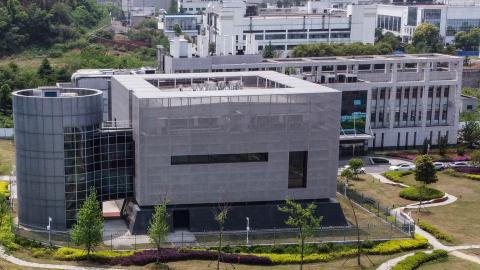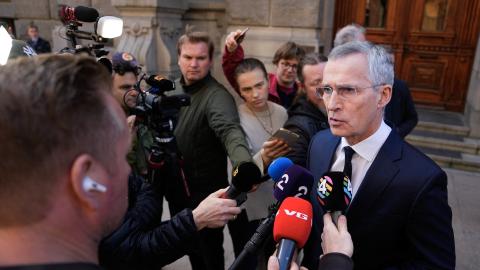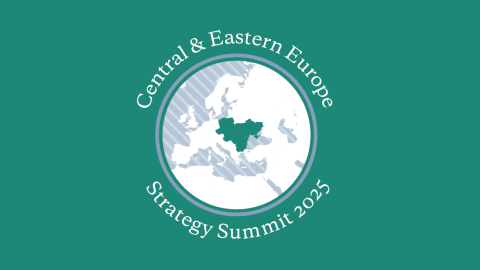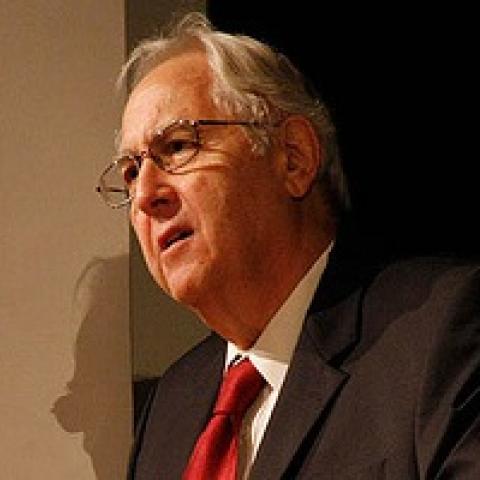At the annual conference of the American Historical Association in New York City this month, anti-Israeli activist historians suffered a rare double defeat. Calling themselves Historians Against War (HAW), the group pushed first for an academic boycott of Israel, then for condemnation of alleged Israeli violations of academic freedom. But a handful of AHA members led an effective fight against them—in an admirable echo of the great confrontation of 1970, when, thanks to the remarkable intervention of a then-Marxist historian, the AHA fended off a fierce challenge from the New Left.
Last week’s drama seemed to culminate when outgoing AHA president Jan Goldstein ruled that HAW’s boycott resolution lacked the requisite signatures. Goldstein’s objections, moreover, were not only procedural. She argued that the AHA, as a scholarly organization, had no purview over any Palestinian “right of return,” whose denial by Israel had been said to justify the boycott.
Goldstein had been lobbied intensely by historians Jeffrey Herf and Sonya Michel (University of Maryland), David Greenberg (Rutgers), Sharon Musher (Richard Stockton College of New Jersey), and others. They had warned her that many of the claims made by HAW to bolster its case against Israel were false. HAW maintained, for instance, that during the Gaza war, Israel had intentionally sought to destroy an oral history center at the Islamic University. Herf showed Goldstein evidence that the Israeli target was actually a facility where rocket components were manufactured for Hamas’s military wing, the al-Qassam Brigades. Similarly, HAW maintained that Israel refused to allow Gaza students to study abroad, even in the West Bank, when in fact the restriction applied only to students supporting terrorist groups. Herf also warned Goldstein against further politicizing the AHA: The effect of endorsing HAW’s resolution would be to “support the right of academics to aid in a terrorist war waged against Israel.”
Undeterred by its initial defeat, HAW pushed its agenda again at the AHA business meeting on January 4. This time it sought votes on two resolutions that stopped short of calling for a boycott—but that had been submitted for consideration after the relevant deadline.
The first resolution accused Israel of violating academic freedom and called on the State Department to contest Israel’s denial of visas to (pro-Hamas and Hezbollah) academics seeking to work at Palestinian universities. The second called on the AHA to condemn alleged Israeli acts of violence against Palestinian researchers and archival collections that threatened to “destroy the Palestinians’ sense of historical identity as well as the historical record itself.”
HAW produced 50 signatures from AHA members asking for votes on these measures. The controversy excited enough interest that the business meeting was moved to the large Hilton ballroom, where HAW tried to have the bylaws governing deadlines for resolutions suspended. But the vote on the bylaws went heavily against the radicals, 144 to 51, in a major victory for the forces of sanity.
No such victory is permanent, as those of us who lived through a major defeat of the left at the AHA in 1970 know all too well. Back then, the challenge came from a group called the Radical Caucus—some of whose members are still active now, in HAW or the Mid-Atlantic Radical Historians’ Organization, an AHA affiliate. Their object back then was to get the business meeting to put the AHA on record as opposing the war in Vietnam.
In the early 1970s, the New Left radicals were a minority in the profession, which was dominated by established mainstream historians like John K. Fairbank, Richard Hofstadter, and C. Vann Woodward, old-style liberals who adhered to a strict separation of politics and history. The Radical Caucus, born in late December 1969, was at first composed largely of University of Wisconsin-Madison graduate students. But even then, left-wing historians were beginning to gain university appointments. One of them—Marxist Eugene D. Genovese, at the University of Rochester—argued that leftist historians should defend the university and seek to hold it to its own highest standards. The New Left preferred to confront the university and expose its links to other so-called oppressive American institutions.
And so it was that at the 1970 AHA convention, all hell broke loose. Radical historians Staughton Lynd and Arthur Waskow, speaking on behalf of the Radical Caucus, called for a commitment by the AHA not just to “historical studies,” but to “the intellectual liberation of Americans” and the demystification of “the holders of power.” Professional historians, they argued, were meant to serve the public. To this end, they demanded a “special Fund for the Liberation of Historians.” Chicago radical Richie Rothstein called for historians to build the “people’s identity as cadre of a radical movement (who happened to be engaged in the vocation of history) rather than as honest historians (who happened to be radicals).” He demanded an assault on the “professionalism” of academic history. The AHA, he said, should be used to recruit “young historians who have been touched by the Movement.”
This forced a split between those who wanted historians to redefine themselves as activists practicing what Lynd called “guerrilla history” and those who believed a historian should study the record of what human beings have been capable of in the past. Lynd held up as model historians the Cuban revolutionaries who taped the experiences of young Fidelistas at work transforming a prison camp on the Isle of Pines into a youth retreat.
Like this year’s confrontation, the one in 1970 came to a climax at the AHA business meeting. But instead of a few hundred attending, perhaps as many as 3,000 historians packed the ballroom. The Radical Caucus introduced, and later withdrew, a resolution demanding an end not only to the war in Vietnam but also to the “repression” of the Black Panther party. A substitute resolution introduced by the radical scholar Blanche W. Cook “deplored and condemned” the war and urged withdrawal of all American troops. It was Cook’s resolution that eventually came to a vote.
But before that, there was discussion, the highlight of which was a speech by Genovese, a hero of the left ever since, as a young professor at Rutgers in 1965, he had called for a Vietcong victory, sparking criticism from Richard Nixon and a campaign to “Rid Rutgers of Reds.”
Now, Genovese shocked the Radical Caucus. He stood up and said that, although he opposed the Vietnam war, if the radicals’ resolution passed, the bulk of historians in the AHA, who favored the war, would be forced to resign from the group. Noting that the majority of Americans also supported the war, he said that those citizens were as moral and deserving of being heard as the war’s opponents.
The Radical Caucus, he continued in a booming voice, were a bunch of “totalitarians”—in private conversation he called them “Nazis, gangsters, and hoodlums”—and he ended his speech by saying that the time had come for historians to isolate and defeat the New Left and “put them down, put them down hard, once and for all.”
Most of the AHA members present rose and cheered, as the Radical Caucus sat stunned. Genovese, it turned out, hated the antiwar movement and the New Left more than he hated the war. One Radical Caucus member rushed to the microphone and, pleading for the AHA to support the antiwar resolution, asked how historians could “tell their children years later that they did nothing when others were trying to make history?”
When the vote was finally taken, not by the full membership but by a governing body, the radicals lost, 647 to 611.
Serious antiwar liberals, like historian H. Stuart Hughes, publicly supported Genovese, agreeing that the New Leftists were “totalitarian.” His judgment was vindicated when a young historian named Jesse Lemisch presented a paper at the Radical Caucus session the next day in which he argued that the stars of the profession—scholars like Arthur M. Schlesinger Jr., Samuel Eliot Morison, Oscar Handlin, and Daniel Boorstin—were “cold warriors” who themselves were using history as a vehicle for fighting communism.
Lemisch had been dismissed from a teaching job at the University of Chicago, where department leaders said “his political concerns interfered with his scholarship.” Today, he leads the movement of anti-Israeli historians who gained thousands of signatures on a petition circulated during the Gaza war, which Jeffrey Herf, writing in the American Interest, called a petition in support of Hamas.
Today, the profession is no longer led by old-style mainstream historians who understood the necessary division between political activity and scholarship and believed that professional organizations must remain impartial. The young radicals of the 1960s and ’70s received their Ph.D.s and began their “long march through the institutions.” They now dominate the profession. The heartening setback they were dealt last week, however, proved that some still resist the merger of history and politics. Perhaps the example of Eugene Genovese—who died in 2012, a professing Catholic and political conservative—will inspire them to remain stalwart in the cause he once so bravely led.
__This article originally appeared in the Jan 19, 2015, Vol. 20, No. 18 edition of The Weekly Standard.__


















